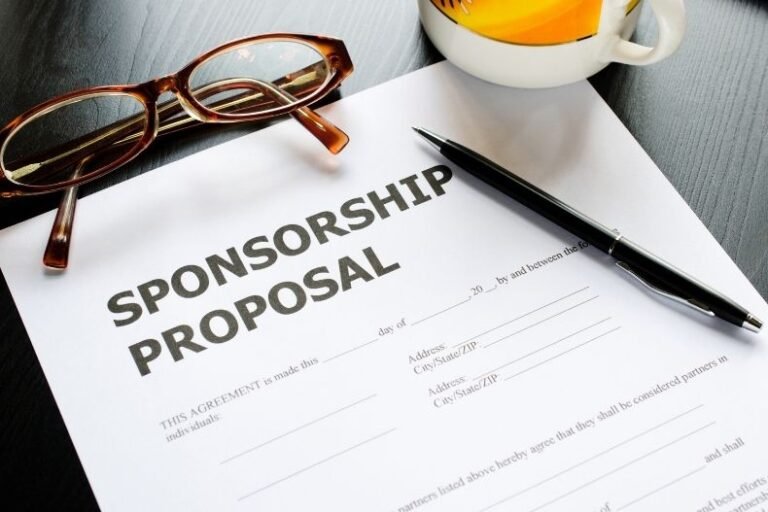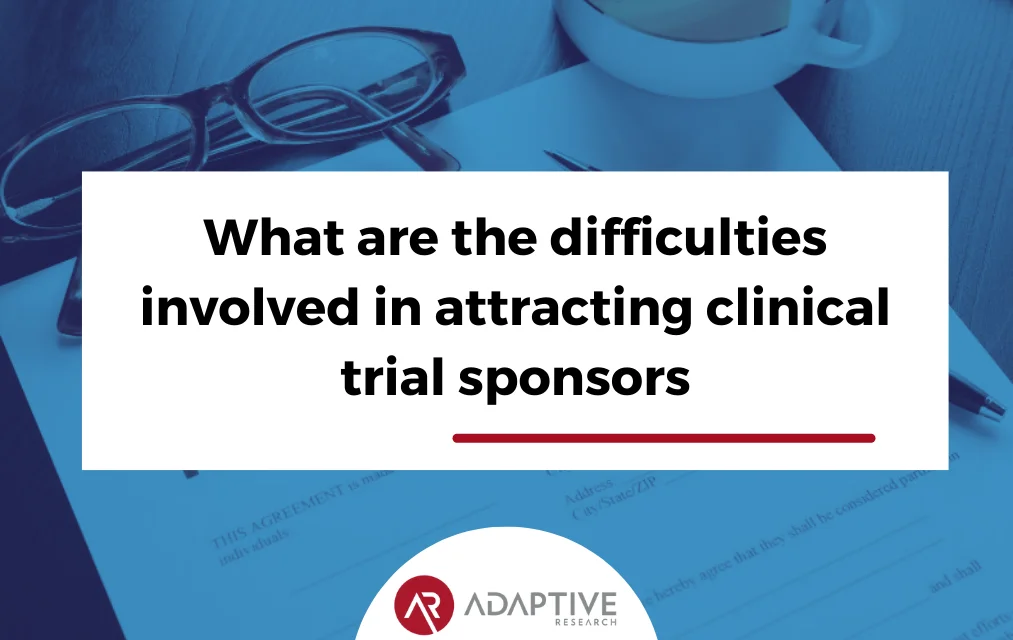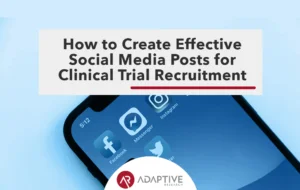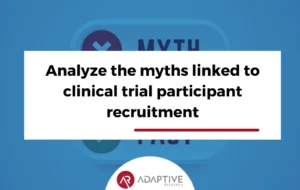Finding clinical trial sponsors can sometimes seem challenging because of many factors, including the lengthy risk aversion procedures imposed by the same clinical trial sponsors. In attempting to formulate a purely scientific experiment (to uphold the likelihood of drug approval), sponsors may constrain enrollment using extensive eligibility criteria that may exclude, for example, people on other medications or with comorbidities. These constraints on registration make it even more challenging to find a sufficient number of participants and protract the recruiting process.

2 main reasons why it is challenging to attract clinical trial sponsors?
1. Due to Clinical Trial Sponsor Induced Barriers
Clinical Trial sponsors face various barriers before, during, and after conducting clinical research outside their control. However, there are also several barriers that clinical trial sponsors voluntarily impose upon themselves, unnecessarily adding further cost and delay to the clinical trial process. While some of these avoidable expenses and delays are incurred due to deficient early planning or inefficiencies in company operations, the majority of them arise from a desire to avoid failure at all costs (Kramer & Schulman, 2011).
Failure for clinical trial sponsors to Integrate Study Design with Clinical Practice Flow.
Industry sponsors typically do not involve site investigators in the protocol design procedure. As a result, the necessary procedures outlined in the protocol might not be easy to easily combine into clinical practice at the sites (Kramer, Smith, & Califf, 2012).
A CRO representative interviewed provided these examples: for instance, a protocol could necessitate that magnetic resonance imaging (MRI) and a collection of neurocognitive tests be executed within three days of each other at a location that does not have adequate access to an MRI machine; or, a protocol might necessitate a series of labs that are remarkably specialized and can’t be executed by the site in-house.
Improved planning and conferring with site investigators during the protocol design phase can assist trials to avoid hitting foreseeable logistical snags.
Clinical trial sponsors almost always capture more data than they eventually use in their FDA submissions. According to experts and industry representatives interviewed, clinical trial sponsors almost always capture more data than they ultimately use in their FDA submissions. Sometimes, this extra data even baffles study results. Though the percentage of data collected that finally goes unused varies by trial, interviewees evaluated that it is anywhere from 10 to 30%. A recent study made by Kenneth Getz and others at Tufts CSDD found that 22.3 percent of all clinical trial procedures are non-core (17.7 percent of Phase 2 procedures and 24.7 percent of Phase 3 procedures).
Sometimes, the clinical trial sponsors unnecessarily collect data that may not be relevant to the specific study.
So, the lack of standardized CRFs and trial procedures across study sites can lead to improperly conducted operations or inadequate data collection at some locations. According to a Tufts Center for the Study of Drug Development (CSDD) study, around 60% of all trial protocols require amendments, a third of which are avoidable.
Data and site monitoring costs, which are primarily self-imposed by sponsors. Typically, industry-sponsored trials are monitored by individuals who visit sites at intervals stipulated by their company standard operating procedure (SOP) or study-specific monitoring plans. The pharmaceutical industry gauges that monitoring can account for 15 to 30% of total trial costs (Davis, Nolan, Woodcock, & Estabrook, 1999).
Clinical trial sponsors may choose academic institutions as clinical trial sites. Sometimes, clinical trial sponsors might find it appealing or necessary to use educational institutions as trial sites. For example, sponsors might seek to employ key opinion leaders affiliated with a specific institution, or they may be examining a very specialized disease area for which trial participants can only be found in sufficient numbers at particular universities, medical schools, or other academic sites.
Even if these are beneficial, many aspects of academic institutions are not conducive to efficient and successful clinical research since educational institutions are well-known for taking their ethical and regulatory oversight obligations to extremes and making bureaucratic entanglements that add months to clinical trial timelines (Kramer, Smith, & Califf, 2012; Dilts & Sandler, 2006).
Though it does not take up a long period as the grants and contract approval process, securing ethical approval is another source of frustration for drug sponsors working with academic institutions.
Aside from the regulatory and administrative obstacles, several academic medical centers underappreciate or fail to avail incentives for clinical research. There is an apprehension that clinical research is less intellectually demanding than basic research. Moreover, many educational institutions do not infix a feeling of professional commitment to giving rise to new medical knowledge as part of clinical practice in their students, trainees, and faculty. As a result, faculty contracted in clinical research clash for resources in the academic setting and face unique challenges in accomplishing academic promotion and tenure. Students watching their battle are not likely to opt for a clinical research career (Kramer, Smith, & Califf, 2012). These students may also hesitate to become sponsors even if they have the resources.
2. Stiff competition for the sponsors with other clinical trials
Competition is usually a great thing, and if it’s healthy, it promotes the growth and production of high-quality services. Competition is typical in clinical trials where companies and researchers work on similar treatment options simultaneously, in the exact geographical locations, and sometimes even research sites and want support from the same limited clinical trial sponsors.

Competition in clinical trials can be great for participants since more possible treatment options are usually being tested, leading to more medications being released on the market. However, competing clinical trials can be difficult for sponsors. Suppose the clinical trial participant population is small and the number of preferred sites is even smaller. In that case, the competition for those clinical trial participants can be fierce, making it difficult for clinical trial sponsors to choose which research program to support.
Some clinical trial sponsors fear making unnecessary losses, especially if two or more research programs are in direct competition as there will be more recruitment time and resources wasted, which could have been applied to other valuable projects.
The real challenge here is that since clinical trial participants are spread across competing trials, research is reduced, and potential medicines are not reaching the people who need them faster.
Conclusion
The main challenges of attracting clinical trial sponsors are caused by clinical trial sponsor-induced barriers and stiff competition for the same sponsors with other clinical trials. According to experts and industry representatives interviewed, clinical trial sponsors almost always capture more data than they ultimately use in their FDA submissions. Sometimes, this extra data even baffles study results. Moreover, competition in clinical trials can scare away sponsors.
Sources
https://www.antidote.me/blog/medical-trials-top-5-reasons-why-its-so-hard-to-find-participants
https://aspe.hhs.gov/reports/examination-clinical-trial-costs-barriers-drug-development-0






